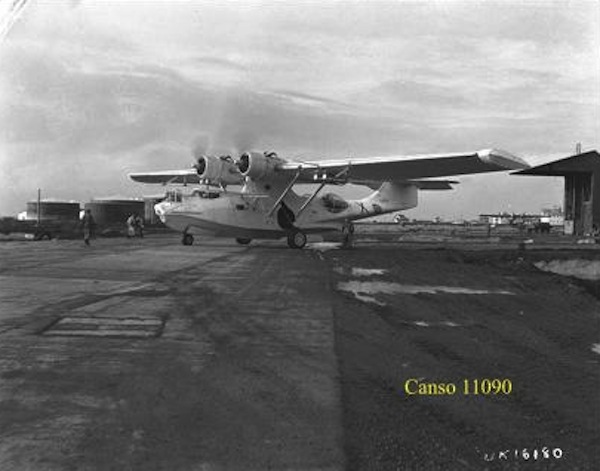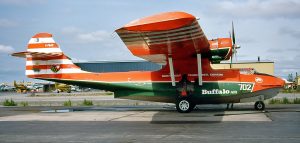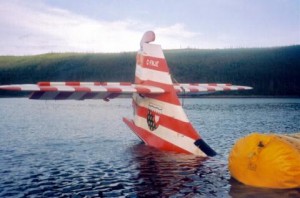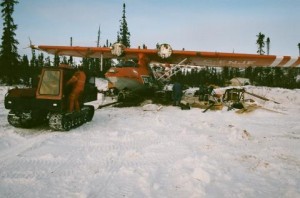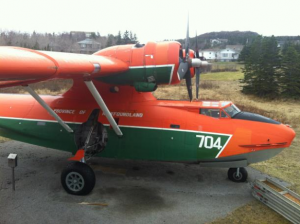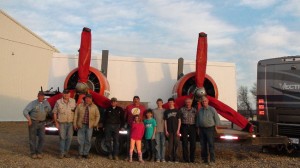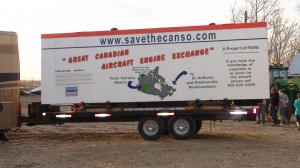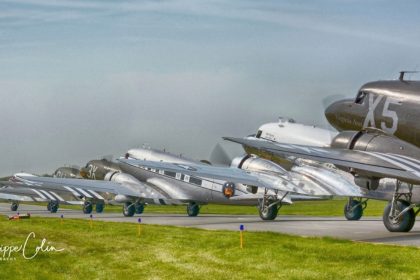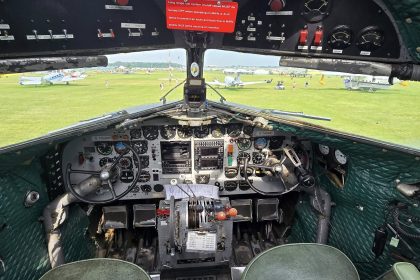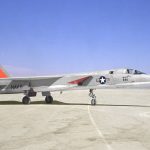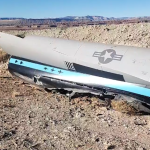What started out as six farmers from Fairview, Alberta looking to save a piece of aviation history has snowballed into a nationwide effort to get a downed Consolidated PBY 5A Canso retrieved from the wilderness and back in the air. The Group they have formed, the Fairview Aircraft Restoration Society (FARS) is a non-profit, and is undertaking the retrieval, restoration and ultimately the operation of Canso PBY-5A, C-FNJE.
(Image Credit: Michael Prophet)
This particular plane has a long history serving the people of Canada. Built for the Royal Canadian Air Force in 1943, it started its life as RCAF11094 and had its first flight as a patrol bomber during WWII. The plane was converted to a freighter after the war and was utilized by the government for running freight and supplies to the Arctic through the 1960s when it was sold into private hands, continuing to carry freight to Arctic communities. Around 1970, the Government of Newfoundland and Labrador purchased the plane and converted it into a water bomber, serving in this capacity for the province until 1997 and the plane still bears the distinctive orange and green livery of the province.
(Image Credit: FARS)
The PBY 5A was owned by Joe McBryan’s Buffalo Airways which operates passenger, cargo, firefighting and fuel services in Canada’s Northwest Territories. Interestingly, the airline is the subject of the popular History Channel reality show “Ice Pilots,” which is presently in its fourth season. It was in the possession of Buffalo Airways that the Canso met the end of its service in 2001, when while picking up water in Sitidgi Lake, a poor landing caused the nose wheel enclosure to rupture and the plane sank. Buffalo Airways sent a crew up to raise the sunken plane, but it was only to retrieve parts, so after stripping the engines, propellers, instruments and radios, the plane was left sitting on the shoreline.
In 2007, Don Wieben, who would become Vice President of FARS, was chatting with Joe McBryan and noticing that Buffalo Airways had three three Cansos up for sale, he remarked that McBryan should save one of them as a heritage plane because of their significant role in Canadian Aviation. McBryan responded that there was a Canso with a distinguished Canadian history sitting on the shore of Sitidgi Lake if Wieben wanted it. A price was negotiated for the wreck and Wieben found himself with an enormous task ahead of him.
(Image Credit: FARS)
The team that undertook the retrieval project consisted of six farmers from Fairview who fabricated a set of skis to allow then to tow the plane from Sitidgi Lake, on the shore of the Arctic Ocean the 75 miles to the nearest road, using a tracked vehicle to tow the craft over the ice and tundra.
Their tow vehicle broke down halfway across the tundra, and the group decided to rent a tow vehicle from a local contractor in order to complete this portion of the long trip. Much to their surprise and gratification, at the end of the day the contractor told them “don’t worry about it” and saved the group what would have been a $10,000 rental charge, according to FARS president Doug Roy. The plane was shipped overland about 1700 miles to Inuvik where the goodwill and generosity continued, with the Northern Transportation Company, which barges freight into Artic communities, donating storing and shipping the plane nearly 1000 miles to Hay River, Alberta. Transit from Hay River to Fairview was accomplished by a heavy duty equipment company that works in Alberta’s Oil Patch and had the specialized double drop trailer required, and who after hearing about the project, donated the truck, driver and fuel. Says Doug Roy, “We just ran into so many people willing to help out where they could. It was really amazing to see complete strangers willing to give us a hand.”
(Image Credit: FARS)
The groups luck with the generosity of strangers continued with the donation of engines with low service hours that were in place in a static display Canso in St. Anthony, Newfoundland that were exchanged for a pair of time-expired engines that the group installed in their place. The operation, titled the “Great Canadian Aircraft Engine Exchange” had the group driving across the country to accomplish the swap.
(Image Credit: FARS)
(Image Credit: FARS)
Meanwhile back in Fairview, the airframe is being restored. The frame is in good shape overall but there is a fair amount of structural damage. A mechanic who has done a a great deal work on these planes for Buffalo Airways has been working on the craft, bringing everything back to airworthy standard, though it requires a great deal of hand fabrication as parts are long unavailable.
The new engines are scheduled to arrive from Newfoundland this month and the project continues to proceed at a surprisingly good pace, with much interest and support from the Canadian public. Said volunteer Norbert Luken who participated in the engine swap mission: “Everywhere we stopped people were walking up, stopping their cars and coming up, practically stopping traffic to find out what we were up to,” Luken said. “It’s kind of strange thing to experience, because you don’t really know them but there was all this interest in learning about the project.”







